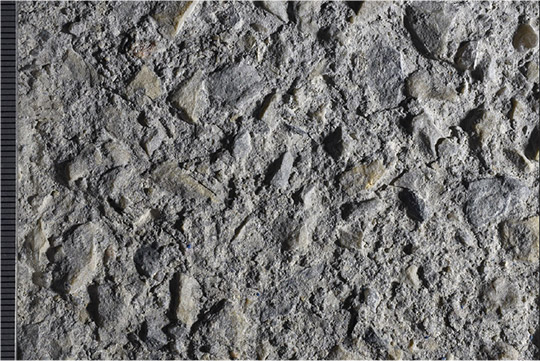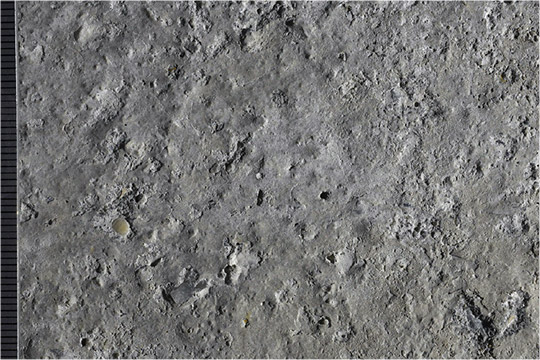PoreShield™ Protects Concrete from Damage Below the Surface
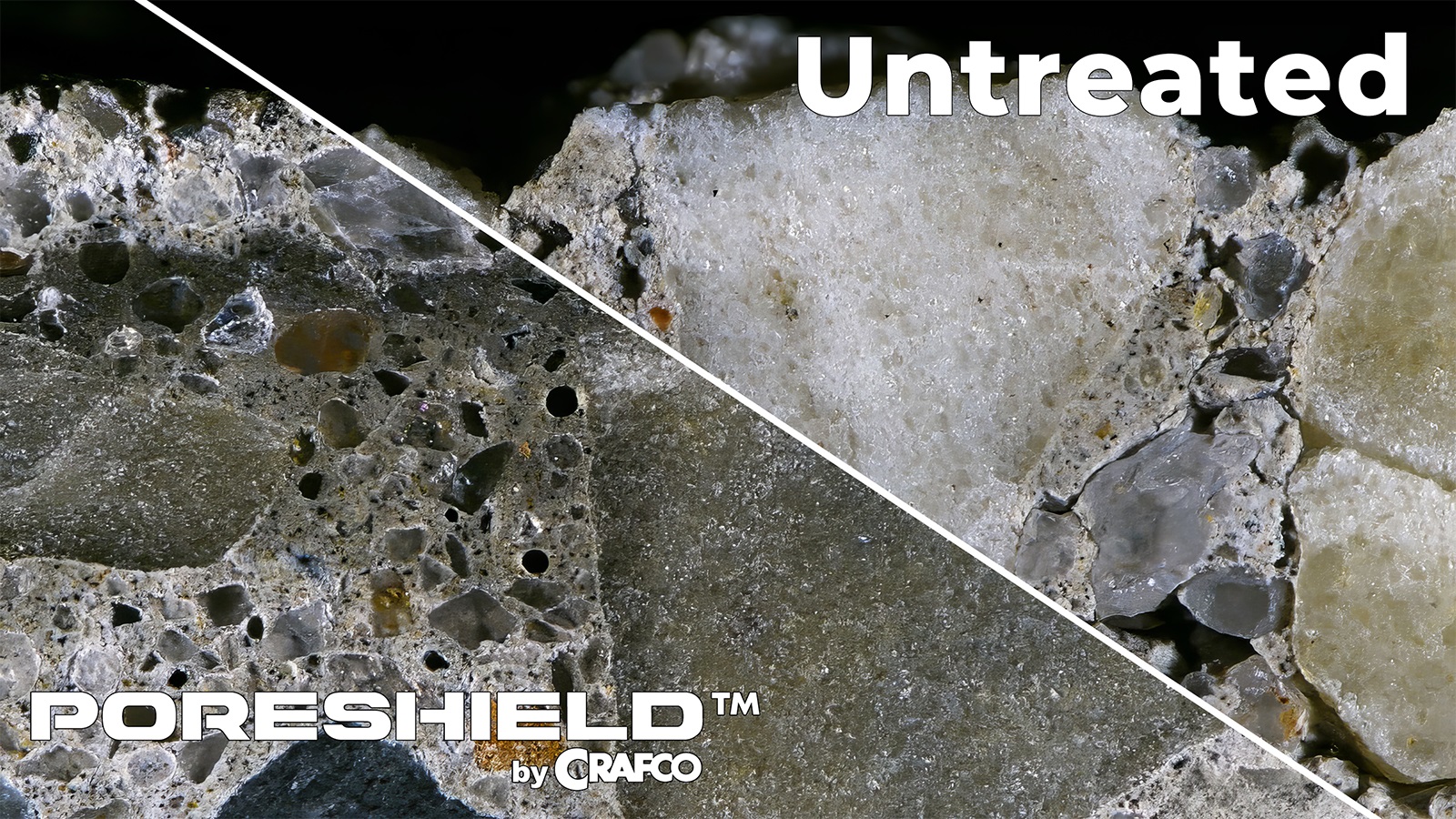
PoreShield is a revolutionary concrete durability enhancer that protects concrete from chloride ion damage that occurs at the surface and from the inside out. With a single application, PoreShield extends the life of concrete longer than untreated concrete by protecting against water, salt and freeze/thaw damage. PoreShield is absorbed deep into concrete, filling pores with a self-sealing compound and actively responds to potentially destructive changes in concrete, preventing harmful deicer ions from entering concrete pores. This is how PoreShield prevents scaling damage.
Unlike toxic conventional sealers, however, PoreShield is derived from soybeans, making it safe, sustainable and cost-effective. PoreShield is 100% American-made, from farm to infrastructure.
More than a decade of research and testing demonstrates the superior protection PoreShield has to offer. A recent study out of Drexel University shows how PoreShield prevents water and salt scaling damage over time. The study compared the scaling damage of two concrete samples, one untreated and one treated with PoreShield following ASTM C 672 testing. The rigorous testing involved exposing the samples to daily freeze/thaw at 40 g/L of CaCl2 for 10 weeks.
Concrete Top Surface Photos
After 10 weeks of daily freeze/thaw at high concentration of calcium chloride treatment, the untreated sample had significant scaling and surface damage exposing the interior aggregate.
In comparison, the PoreShield-treated concrete showed very low surface damage.
Cross-Section Photomicrographs
As shown under high magnification, the untreated concrete shows critical damage and surface corrosion after exposure to repeated salt and freeze/thaw cycles compared to the PoreShield-treated concrete, which shows very little surface damage.
Following the ASTM C 672 testing, damage to the untreated concrete extends below the surface.
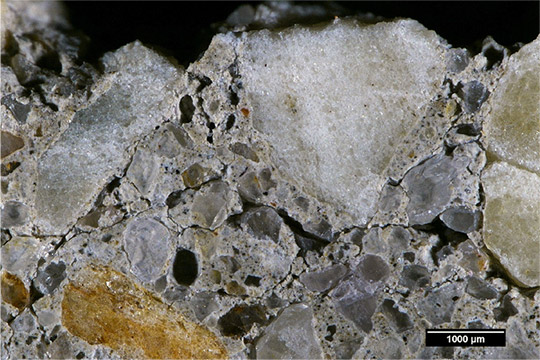
UNTREATED CONCRETE – Cross-section photo micrographs show significant interior damage: cracking and deterioration of the interior concrete.
In the cross-section photomicrographs, the untreated concrete shows exposed aggregate and deterioration at the surface and the interior concrete has cracks and breaks throughout.
In comparison, the PoreShield-treated concrete shows little surface erosion and no interior cracks or deterioration.
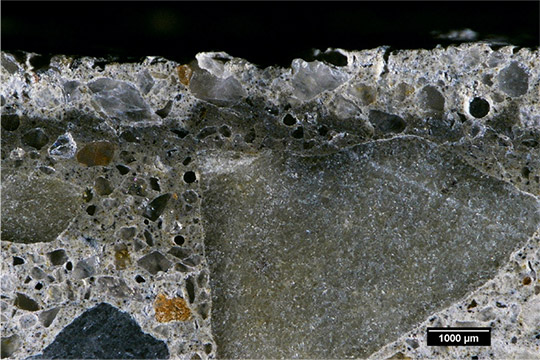
PORESHIELD™ TREATED CONCRETE – Cross-section photomicrographs show no interior cracking of the concrete sample.
Over the duration of the study, the untreated concrete lost 250 mg in mass, while the PoreShield-treated sample lost less than 10 mg in mass. This research demonstrates the long-term protection PoreShield provides deep below the surface of the concrete.
Questions? Get in touch for expert advice to protect your next concrete project. And check out additional case studies to see how PoreShield is protecting infrastructure in the real world.
Source: He, Farnam, et al (2021). Evaluating the Protecting Performance of Soy Methyl Ester-Polystyrene in Reinforced Concrete Exposed to Freeze-Thaw Cycles and Deicing Salts Using a Three-in-One Nondestructive Laboratory Assessment.

